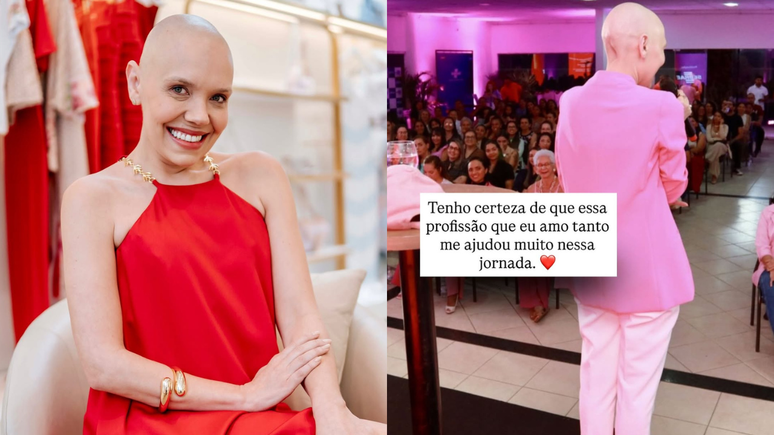-
Chromotherapy is a complementary treatment that uses colors to seek balance between body and mind, aiming for well-being with relief from the symptoms of the disease.
Photo: Image from Pexels by Pixabay / Flipar
-
Chromotherapy is a very ancient technique, which began already in great civilizations, such as Egypt, Greece, China and India.
Photo: wikimedia commons/public domain/Flip
-
In this therapy each color has a different therapeutic function and can be applied with a variety of tools.
Photo: Image by Игорь Мамаев from Pixabay / Flipar
-
Colored lamps, clothing, food, colored windows or solarized water are ways to carry out this treatment.
Photo: Freepik/Flipar
-
Chromotherapy is not approved by the Federal Council of Medicine, as there is no scientific evidence of its effectiveness.
Photo: Image by Gustavo Ferreira Gustavo from Pixabay / Flipar
-
However, it is approved and offered by the SUS, as part of the National Program of Integrative and Complementary Practices (PNPIC).
Photo: Pixabay/Flipar
-
Chromotherapy is carried out using devices that emit light of different colours, and this light can be emitted directly onto the skin or the person can be in contact with the light inside a closed room, lying down or sitting.
Photo: Image by Balázs Somos from Pixabay / Flipar
-
The choice of color depends on the therapist’s recommendations, the most used colors are red, orange, yellow, green, blue and purple.
Photo: Image by Daniel Albany from Pixabay / Flipar
-
The colors red, orange and yellow can be classified as warm, which are stimulating, while the colors green, blue and purple are called cool colors and are linked to a calming effect.
Photo: Image by Daniel Albany from Pixabay / Flipar
-
This type of treatment is available at health centers in some cities and can be offered by SUS, the Unified Health System.
Photo: Image Morrayah by Pixabay / Flipar
-
Some hospitals and clinics also offer chromotherapy treatment, however it is important that it is carried out by professionals and therapists trained and qualified in this type of practice.
Photo: Image by Daniel Albany from Pixabay / Flipar
-
Among the benefits, chromotherapy alleviates the symptoms of a certain disease through a specific color, improves physical and mental well-being, as well as reducing physical fatigue.
Photo: Image by Luiz A. Rolim de Moura Luiz Rolim from Pixabay / Flipar
-
It also helps reduce sleep disorders, helps treat headaches and stimulates the central nervous system.
Photo: Image by Gerd Altmann from Pixabay / Flipar
-
Furthermore, chromotherapy is often used as a complementary treatment for those with heart and blood circulation problems.
Photo: Image from PublicDomainPictures by Pixabay / Flipar
-
Due to its benefits, color therapy can be used for different types of health problems such as fever, insomnia, diabetes, psychiatric diseases, hypertension, seasonal affective disorders, wounds and joint diseases. But always in parallel with the traditional medication of the healthcare professional.
Photo: Armenian image from Pixabay / Flipar
-
There are some cases where color therapy is widely used, such as applying blue light to newborns with jaundice and people with infected wounds.
Photo: Freepik/Flipar
-
Additionally, the use of pink light can help treat people with depression, as it helps increase certain mood-enhancing substances, such as serotonin.
Photo: Anoerone / Flip video playback
-
Attention! Despite having health benefits, chromotherapy can have unwanted effects if the colors are not used correctly or if they are carried out by unqualified professionals.
Photo: Image from Pexels by Pixabay / Flipar
-
Also, the colors red and orange should not be used by people with fever or who are very nervous, as these colors can intensify these symptoms.
Photo: Freepik/Flipar
-
Likewise, according to experts, people suffering from gout should not wear blue and purple colors because they worsen the symptoms of the disease.
Photo: Freepik/Flipar
-
Despite being a form of therapy, it is important to underline that chromotherapy does not replace the treatment indicated by the doctor. It should only be used as a complementary practice.
Photo: Image by Dmitriy from Pixabay / Flipar
To share
Source: Terra
Ben Stock is a lifestyle journalist and author at Gossipify. He writes about topics such as health, wellness, travel, food and home decor. He provides practical advice and inspiration to improve well-being, keeps readers up to date with latest lifestyle news and trends, known for his engaging writing style, in-depth analysis and unique perspectives.







